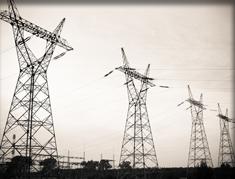Public-Private Partnership: The new opportunities for Kyrgyzstan
Gulnara Kalikova
This article is the first of a series of articles on public-private partnership. Its authors, Gulnara Kalikova and Albina Rahmidinova tried to give the reader a general idea of public-private partnership. Subsequent articles which authors are experts from England, Ireland, Kazakhstan, Russia, South Korea and Kyrgyzstan, will talk about the experiences of different countries in the use of public-private partnership, the requirements of international practice and how the partnership between the state and the private sector can help develop the economy of Kyrgyzstan.
The law on public-private partnership (further the “PPP”) has been passed more than a year ago. But the wide public hasn't learned what PPP means, how it is applied by other countries and whether there are prospects of PPP development in Kyrgyzstan. We attempted to answer these questions.
What is the PPP?
There are many definitions of the PPP, but perhaps one of the most simple and brief as follows: PPP - a model of long-term and mutually beneficial cooperation between the State and business to solve to socially significant problems.
In particular, by the PPP the State concludes long-term contracts with private partners on the reconstruction/construction and operation of public infrastructure (road and railways, power lines, power plants, hospitals, schools, kindergartens, water and heat supply systems and etc.), subject to private investment and risk sharing between the State and the private partner. Ultimately, the State gets reconstructed/constructed state facilities, and private partners receive income derived as a result of its operation.
The idea of the PPP emerged in Britain in the early 1990's, where the State has decided to involve business to the construction of roads, which traditionally was responsibility of the State. In subsequent years, the PPP model has been picked up by many countries. If at first the State used the PPP, mainly for the development of transportation infrastructure, subsequently its scope was to include construction and operation of electric power, heat and water, health, education, culture, recreation and sporting facilities and other social facilities. In the mid-nineties, the PPP was used only a few countries and today the PPP is used on virtually all continents.
Let’s make some examples of PPP model for evidence.
The first example is from Israel using the PPP model for construction of the highway No.6 known as the Cross-Israel Highway. This is the only high-speed toll road in Israel, equipped with electronic fare payment. Highway construction was completed in five years. In May 2004 the facility was commissioned and opened for use. The length of the highway No. 6 is 86 km, but the construction to lengthen the highway continues. The private sector in the project presented by the Derech Eretz Group, that has concluded an agreement with the State on construction and overall management of the section of road under scheme BOT (Build - Operate - Transfer). The total project cost is $ 1.3 billion, of which 90% were borrowed funds. In 2006, the Derech Eretz Group company's profit amounted to 89 million New Israeli shekels, the number of users of the highway was 500,000. The project has reduced travel time from the northern to the southern part of the country, has ensured the development of development of the settlements removed from the center, has unloaded the other highways, has led to a reduction in road traffic accidents and reduced air pollution from traffic in Israel.
The second example is from Russia, where the PPP has been actively developed since 2006. As for today tens of regional PPP projects are accomplishing in Russia, one of them - the project in which the government of St.-Petersburg has signed a contract with a private company for expansion, renovation and operation of the Pulkovo Airport. This is the first major PPP project in the Russian aviation industry, its term - 30 years, the initial funding for the period till 2013 - 1.2 billion Euros. The project was launched on April 28, 2010, but prior to that date for two years, underwent a major preparatory work, including the development of reconstruction of the airport strategies, the tender, the consideration of applications to determine the winner, contracting, and finally the transfer of assets, which marked the beginning of the actual project.
The above mentioned examples demonstrate the following important features of the PPP:
- long-term (usually 10 to 30 years) cooperation (based on a contract) between the State and business;
- joint resolution by the State and business of problems associated with the development and modernization of vital social infrastructure, and
- mutually beneficial cooperation, in which the State, involving private investment, solve the problem of infrastructure development, and business gets state-guaranteed profits from its operation.
There are about twenty models of PPP. We will stop on some of the most common:
«Build - Operate - Transfer» (BOT): a contractual obligation according to which the private partner performs financing and building of object of an infrastructure, and further - operation and the maintenance. The private partner operates the infrastructure facility for a specified period of time, during which he may charge a fee for services from the users of the facility. Charging is carried out in order to recover the costs of the private partner in the construction, operation and maintenance of the facility. The private partner transfers the infrastructure facility to the State after a certain period of time specified in the agreement.
«Build and Transfer» (BT) – the contractual obligation according to which the private partner performs financing and building of object of an infrastructure and after the end of building transfers the given object to the State which must pay costs of the private partner for object building. The given obligation can be applied at building of any object of an infrastructure, including strategically important objects which of safety reasons should be maintained by the State.
«Build - Lease - Transfer» (BLT) – the contractual obligation according to which the private partner performs financing and building of object of an infrastructure and after the end of building transfers it to the State on a lease basis to a defined period after which the ownership right to object automatically pass to the State.
In practice use of one or another kind depends on conditions of each certain project and which sphere of an infrastructure the project is performed.
The PPP should not be confused neither with privatization nor with public procurements. In the process of privatization the State transfers objects to the possession of private persons in the PPP the State passes object to private persons for a specified period and under certain conditions. Unlike the public procurements used by the State for the purpose of single acquisition of the goods or services to meet the needs of the State, the PPP implies a long-term and multi-level cooperation between the State and business to meet the needs of the population.
How the PPP is regulated in various countries?
There is no uniform approach in the world to the PPP regulation. For more clearness we will stop on examples of the several countries.
In South Korea, known as one of the pioneers in the field of PPP, the law on PPP has been passed in 1994. The State controls the PPP process, through the Ministry of Planning and Budget. Right to enter into the PPP contracts have the Ministry of Commerce, Industry and Energy, the Ministry of Maritime Affairs and Fisheries, the Ministry of Construction and Transportation, and several other ministries and local self-government bodies. As a result of an active position of the State from 1996 to 2007 the share of private investments into an infrastructure in relation to the State investments increased from 1,2% to 17,4%.
In Turkey are absent both the uniform law on PPP, and the uniform state structure responsible for PPP. At the same time, the PPP is regulated by different codes and branch laws, and the right to the conclusion of PPP contracts has almost each municipal body, ministry and official body. Absence of uniform regulation doesn't interfere with PPP development. Only for last seven years the total cost of PPP contracts in the field of a transport infrastructure has constituted about 60 billion Turkish lyres.
The experience of Kazakhstan, where the PPP is based on the Law on concessions seems interesting. In July 2008 the Government of Kazakhstan established the PPP Centre, which powers include evaluation of concession projects, advising government agencies on the PPP and project monitoring. Currently, with help the PPP Center in Kazakhstan, carried five PPP projects in the construction of the railway infrastructure, the one of the airports terminal, power lines and power plants. In preparation are 14 projects, including reconstruction of roads, construction of kindergartens and recreational facilities.
According to estimates of international experts, all countries using the PPP can be divided into three groups:
- the first group comprises countries that have political and legal grounds needed to implement the PPP projects, but yet do not have a stable and orderly practice of project management (e.g., China, Russia, Hungary, Slovakia, etc.);
- the second group comprises countries, created, in addition to favorable political and legal environment, the system of State regulation of the PPP, established standard and consistent processes and procedures, that have built up and constantly increasing practice in the field of PPP (e.g., Japan, Germany, Spain, Italy, Portugal, France, etc.); and
- the third group consists of countries with a solid portfolio of successfully completed and ongoing PPP projects, with access to funding of projects and well-trained professionals in the field of PPP (such as Britain and Australia).
Unfortunately, Kyrgyzstan does not belong to any one of these groups.
Is there a need for PPP development in Kyrgyzstan?
Kyrgyzstan for many years, experiencing “infrastructure deficit” that is expressed in a poor state of roads, hospitals, schools, kindergartens, administration buildings, energy systems and water supply systems and other infrastructure. One indicator of the quality of infrastructure is a global index of competitiveness of countries. For example, among 133 countries Kyrgyzstan took 123 place in regard of the economy competitiveness. In regard of infrastructure, Kyrgyzstan took 112 place on the quality of infrastructure in general and 127 place on the quality of transport infrastructure and 125 place on the quality of power transmission lines, 92 place on the quality of telephone lines. Poor quality of infrastructure, in turn, places a heavy burden on society, reflected in its low productivity and competitiveness, low quality of life.
At present the State budget cannot cope with the problem of timely and full financing of infrastructure. Private investment in infrastructure projects, attracted by the PPP, can become a great assistance to the State. Given the critical state of infrastructure and the inability of the State budget for its financing, we consider the development of the PPP in Kyrgyzstan as a vital necessity.
The Law on PPP
Before the date of enactment of the Law on PPP in May 2009, elements of public-private partnerships were present in the Law on Concession (adopted in 1992) and in the Law on Production Sharing Agreements (adopted in 2002). Both laws provide for long-term, on the basis of a contract cooperation between the State and business. In practice, both laws were not viable. The Law on Concession was applied only twice, the cases applying the Law on Production Sharing Agreements are missing.
In Kyrgyzstan, the first mention of the PPP emerged in the Country Development Strategy on 2008 - 2011 years. In the spring of 2009, the Ministry of Economic Development and Trade (MEDT) has submitted to the Government draft of the Law on PPP that meets internationally recognized standards and practices. The law provides a definition of the PPP, description of various models of partnership between the State and business, defined procedure of tender and determination of the winners and many other provisions. In May 2009 the Jogorku Kenesh adopted the Law on PPP, but it had nothing to do with the draft prepared by MEDT.
May 11, 2009 can be regarded as the birth date of the PPP in Kyrgyzstan. On this day the Law on PPP was passed, but it clearly does not meet the basic criteria of the PPP. Among the many discrepancies can be called such as lack of clear and precise rules of competitive selection, the mandatory terms of agreements, descriptions of the PPP models, the order of allocation of risks, and more. Interesting that the law provides the possibility of holding direct negotiations, which is unacceptable in international practice.
The Law of PPP can expect the plight of the Law on Concession and the Law on Production Sharing Agreements, if the State fails to take action to change it. But even changing the Law will not automatically lead to the development of the PPP in Kyrgyzstan.
Is the implementation of the PPP projects possible in Kyrgyzstan?
Yes, it is possible, but we must take into account that the PPP – is not the matter of one day, its implementation will require concerted and systematic steps. For the PPP development in Kyrgyzstan, the State must meet a series of actions, such as:
- to create a political environment conducive to the development of PPP, in particular, develop the concept of adoption and use of the PPP to include in the strategy and plan for the economic development of the State;
- to create a favorable legal environment conducive to the development of PPP, in particular, to change the Law on PPP, to make it meeting the requirements of internationally recognized practices for creating an environment conducive to the implementation of the PPP projects;
- to increase the competence of government officials and private sector in the PPP field, that is to train professionals, especially civil servants, for their knowledge and skills in matters of tenders, contracts, negotiating, monitoring of projects;
- to identify and begin the preparation of potential PPP projects.
In our view, it is appropriate the authorities now to begin work on defining a pilot PPP project, a model which, if successful, could be applied to any subsequent PPP projects. We believe that the pilot project should be average in terms of funding, accessible, in terms of results, and have commercial payback for businesses to increase their motivation to participate in future PPP projects.
In Kyrgyzstan, there are many opportunities for application of PPP. These projects may be the construction (reconstruction) and maintenance of highways, reconstruction and renewal of infrastructure of the energy sector, construction of waste treatment plants, construction or renovation of hospitals.
As stated above, the development of PPP is possible and, moreover, it is necessary to Kyrgyzstan. Partnership of business and the State can become an important tool for national economic development and for improvement of life quality.
(The article was published on the website
www.akipress.kg in the “Economy and Business” section)














